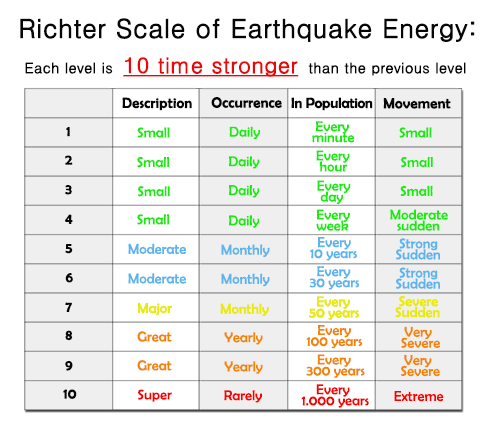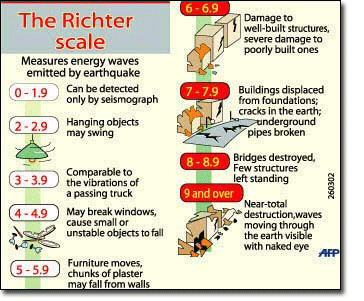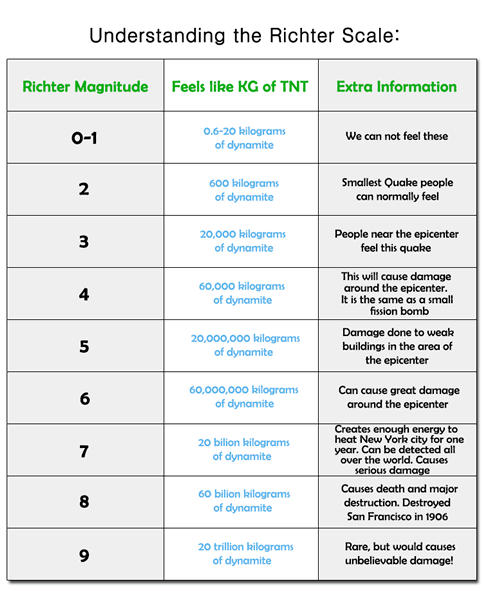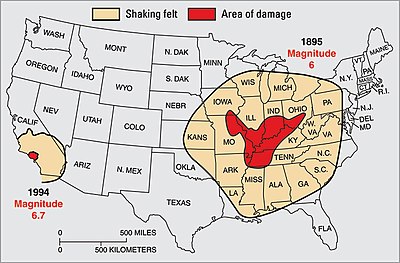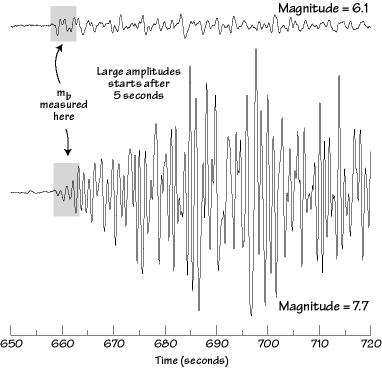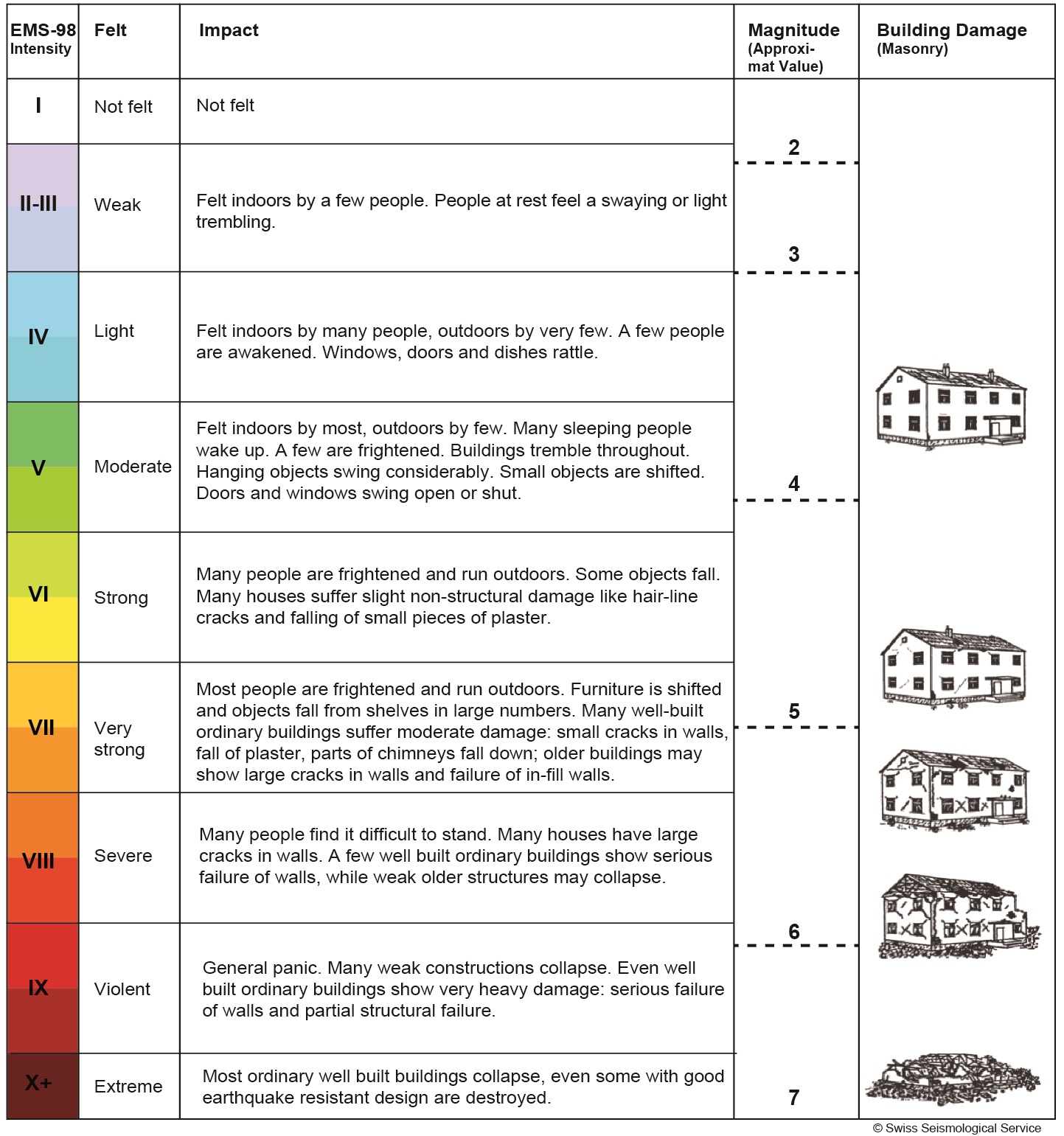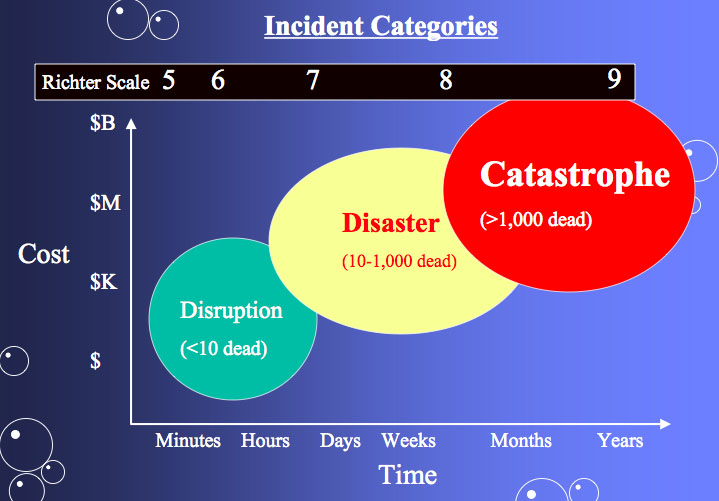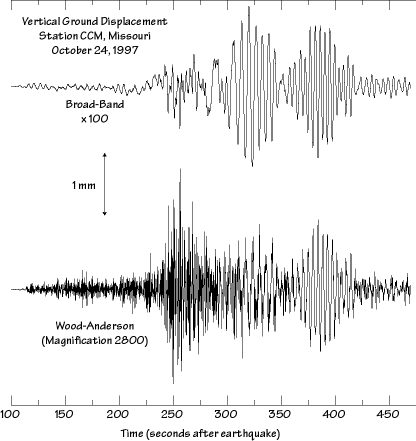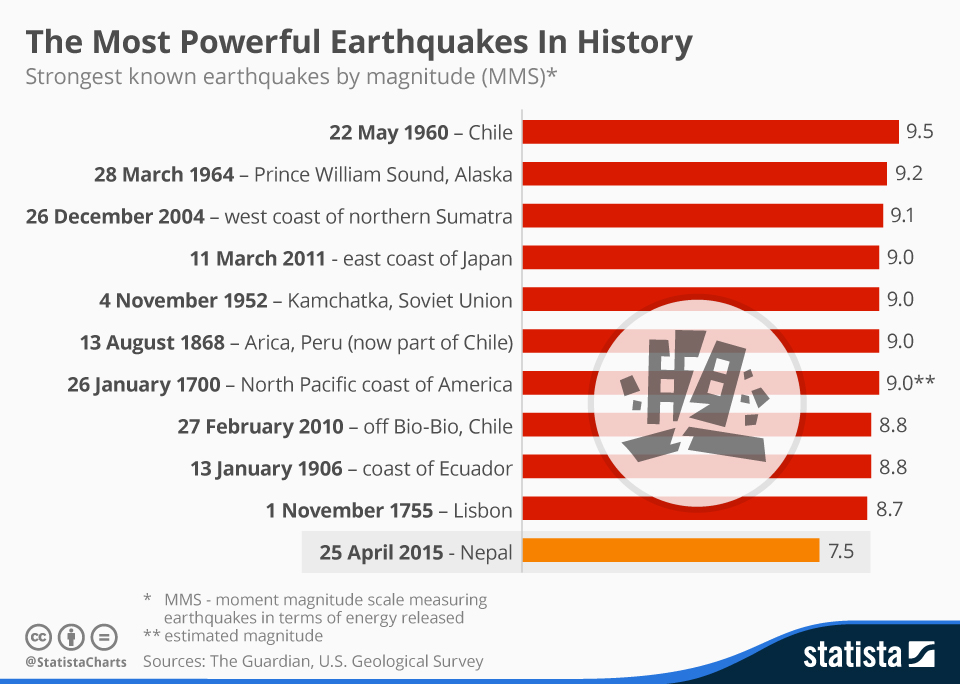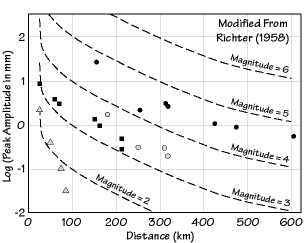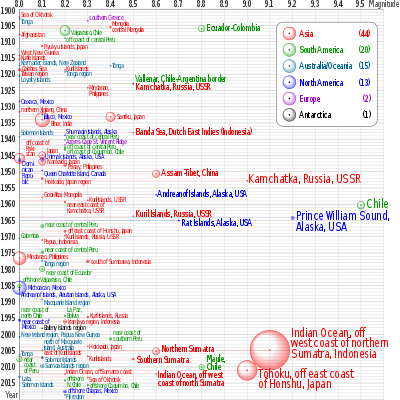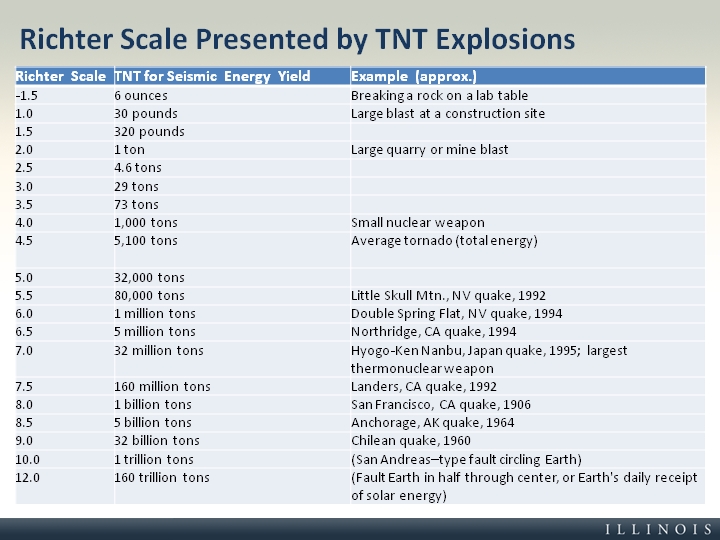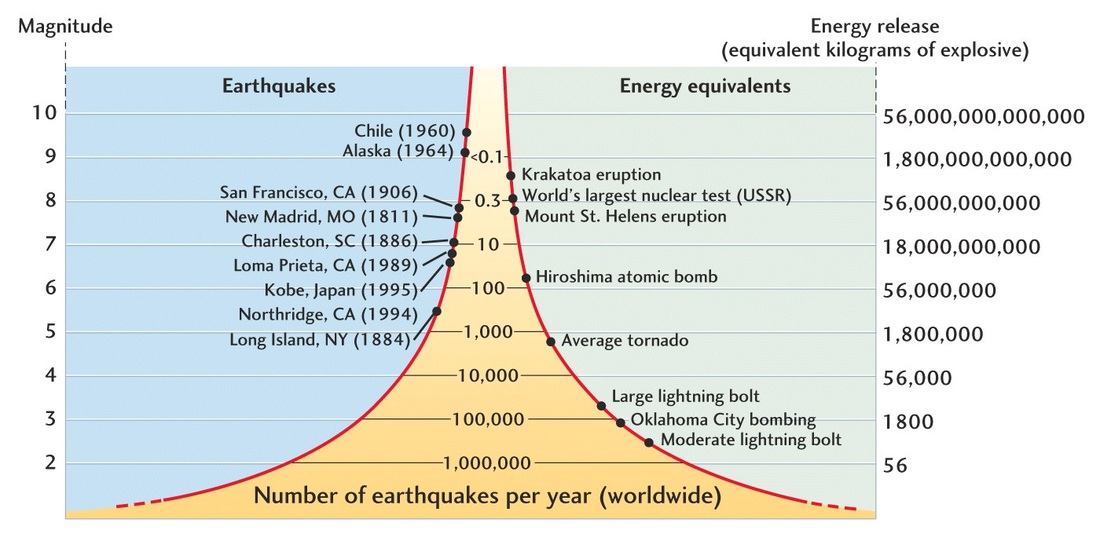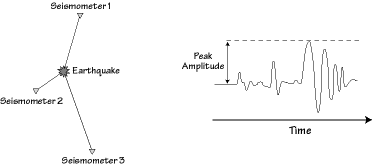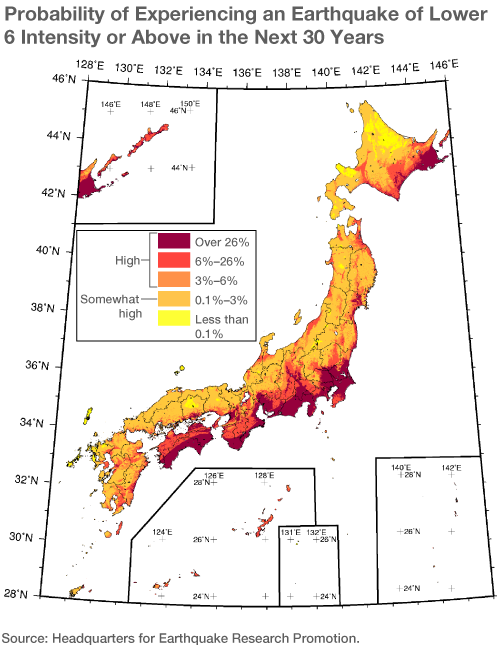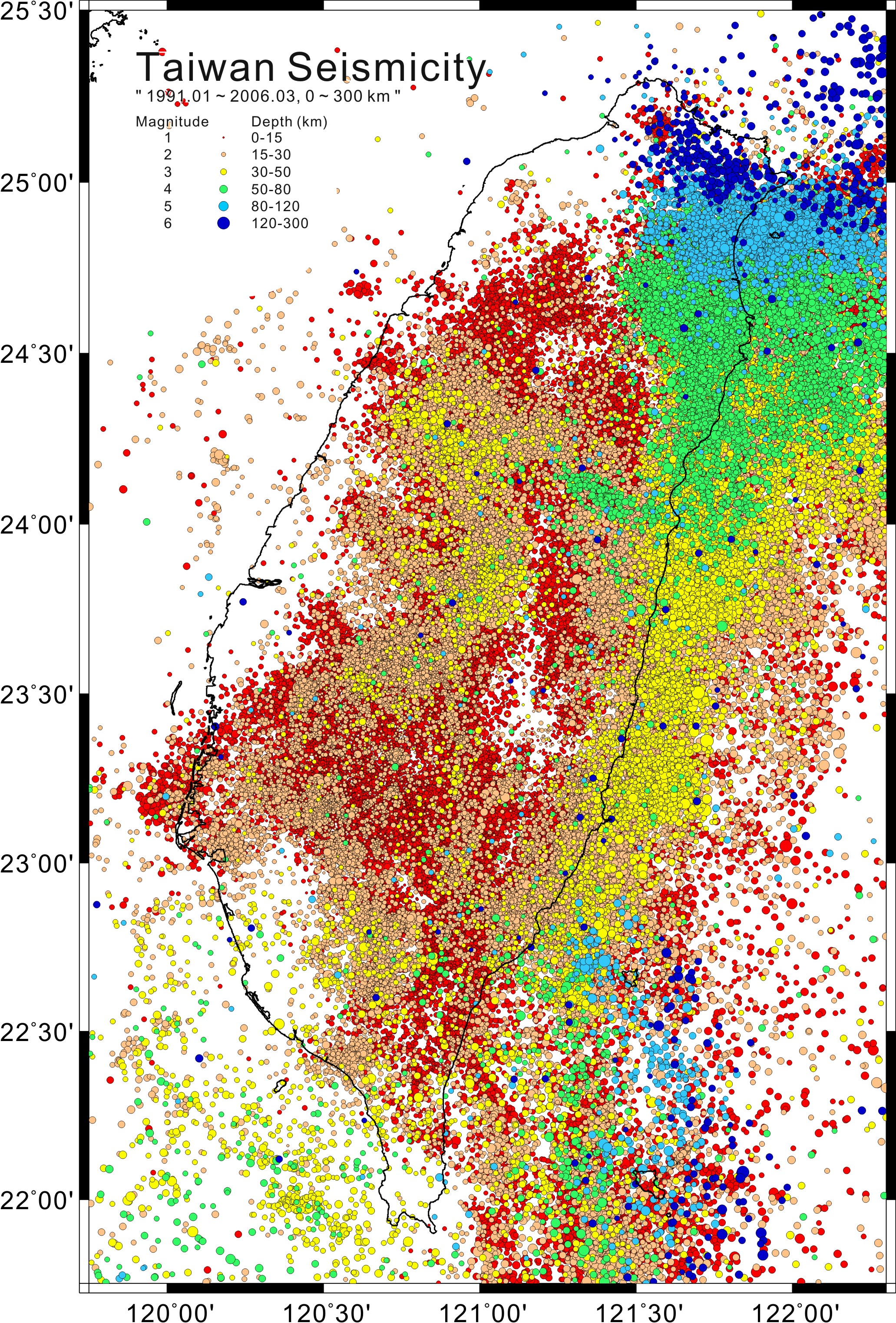Earthquake Magnitude Scale Chart

If the application does not load try our legacy latest earthquakes application.
Earthquake magnitude scale chart. I think it d be vi viii on the. Magnitudes are usually determined from measurements of an earthquake s seismic waves as recorded on a seismogram. Magnitude is determined using the logarithm of the amplitude height of the largest seismic wave calibrated to a scale by a seismograph.
The idea of a logarithmic earthquake magnitude scale was first developed by charles richter in the 1930 s for measuring the size of earthquakes occurring in southern california using relatively high frequency data from nearby seismograph stations. For example a magnitude 5 3 is a moderate earthquake and a 6 3 is a strong earthquake. This was later revised and renamed the local magnitude scale denoted as ml or m l.
This is a basic chart that yields the output of earthquakes from magnitude 1 to 10 5 you can use this and this chart to estimate the appropriate magnitude. In an attempt to quantify and assign a magnitude of energy released from earthquakes to a scale the richter scale a base 10 logrithmic scale was developed defining the ratio of amplitude of seismic waves to an arbitrary minor amplitude wikipedia. Richter and presented in his landmark 1935 paper where he called it the magnitude scale.
Earthquake size as measured by the richter scale is a well known but not well understood concept. Magnitude is expressed in whole numbers and decimal fractions. Seismic magnitude scales are used to describe the overall strength or size of an earthquake these are distinguished from seismic intensity scales that categorize the intensity or severity of ground shaking quaking caused by an earthquake at a given location.
Denoted explicitly with m w or mw and generally implied with use of a single m for magnitude is a measure of an earthquake s magnitude size or strength based on its seismic moment a measure of the work done by the earthquake it was defined in a 1979 paper by thomas c. Because of the logarithmic basis of the scale each whole number increase in magnitude represents a tenfold increase in measured amplitude as measured on a seismogram. Richter scale widely used quantitative measure of an earthquake s magnitude size devised in 1935 by american seismologists charles f.
Richter and beno gutenberg. Usually not felt but can be recorded by seismograph. Estimated number each year.
Javascript must be enabled to view our earthquake maps. Often felt but. Hanks and hiroo kanamori similar to the local magnitude scale m l defined by.
This is a basic chart that yields the output of earthquakes from magnitude 1 to 10 5 you can use this and this chart to estimate the appropriate magnitude. The richter scale also called the richter magnitude scale or richter s magnitude scale is a measure of the strength of earthquakes developed by charles f. To access usgs earthquake information without using javascript use our magnitude 2 5 earthquakes past day atom feed or our other earthquake feeds.



